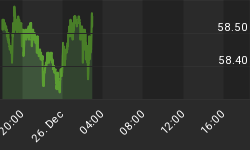Last Friday, the Labor Department reported that 110,000 new jobs were created. This was slightly ahead of the 100,000 economists were expecting. The bigger story was the revision to August employment numbers. Instead of losing 4,000 jobs in August that was initially reported, the Labor Department said that 89,000 jobs were created. The overwhelming majority of the upward revision came from the counting of teachers. The education component of local government was revised from -32,000 to positive 39,000, or 71,000 higher than initially reported. This was over three-quarters of the revision. We have discussed that schools in Texas and Florida started school later this year due to legislation. This not only effected retail sales, but gave the statisticians at the Labor Department some extra work to do as well. While there was a large net positive revision for August, it was still lower than the 100,000 economists expected last month. Plus, there were some notable negative revisions. The number of workers in retail trade was revised lower by 5,000 and was further reduced by 5,000 in September. Employment in the building materials sector was revised lower by 10,000, and then lost another 17,000 workers last month. The Labor Department first reported that 6,000 jobs were lost among credit intermediation firms during August, (re: mortgage brokers). That was revised to 18,000 and another 12,000 were lost in September. Wages were another bright spot. The year-over-year change in average hourly earnings increased to 4.1%. This was the largest increase since February.
The strong labor market has buoyed consumers as the housing market has contracted. There have been indications that consumer spending has started to slow as credit conditions tightened. Retailers report September sales results on Thursday and the government releases its tally on retail sales on Friday. This should shed light on whether consumer spending has continued to slow. This week, the ICSC lowered its estimate for September same store sales to 2% from its previous estimate of 2.5%. This similar to Wall Street estimates as well. Thomson Financial reported that its estimate for September same store sales is 2.1% compared to 2.7% at the beginning of the month. The ICSC cited warm weather along with concerns over the economy for the tepid results. Retailers also had to battle good results from last year as well. The ICSC reported that same store sales increased 3.8% last September. At the time, it was the fastest growth in four months. It turned out to be the best results fro the following five months as well.
Last week, Wal-Mart announced that it started cutting prices on toys this month. This could be the first salvo in what could become a very competitive holiday season. Consumer spending decelerated sharply starting a few months ago as the mortgage market seized up. This happened after retailers ordered merchandise for the holiday season. It's likely that Wal-Mart's aggressiveness stems from the desire not to be holding excess inventory late in the season.
S&P 500 earnings estimates have dropped significantly since the beginning of the quarter. In aggregate, earnings are expected to have increased only 0.7% during the third quarter. Just a week ago, it was 2.7%. Most of the decline over the past week was due to the financial sector. Instead of earnings being 1.7% lower this year, analysts expect earnings to drop 8.9%. Financials are expected to post the worst results and telecommunication service companies are expected to be the best, up 30.8%. Four sectors are expected to post lower year-over-year earning: consumer discretionary, energy, financials, and utilities. Estimates have started to come down for the fourth quarter as well, but analysts remain optimistic. Earnings growth is expected to rebound to 10.9%. This is a significant rebound from the third quarter results, but less than the 11.6% growth expected last month.
The Federal Reserve released the minutes of the September FOMC meeting that resulted in a 50 basis point cut in the target Fed Funds rate. The minutes showed that the Fed was skeptical of the August employment report that showed there was a loss of 4,000 jobs. The Fed removed the balance of risk part of the statement because it "could give the mistaken impression that the committee was more certain about the economic outlook that was in fact the case." The Fed also noted that "inflation risks could be heightened if the dollar were to continue to depreciate significantly."
Between the FOMC minutes and the employment report, the likelihood of further rate cuts has been almost cut in half. At the beginning of October, traders assigned about a 36% probability of Fed funds remaining at 4.75% at the October meeting. That has increased to 66%. Additionally, the most probabilistic Fed funds rate at year end was 4.25%, with a 44% probability. Now, the odds that Fed funds remains 4.75% until the end of the year is the most probable at 39% followed by one cut (35% probability).















